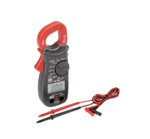Yes, but you'd need access to the 3-phase supply and a transformer to do it. You could use an autotransformer with the existing 208 to step it up to 240, but that's just another clunky and expensive solution. Maybe the track guy is unaware of the 208V situation and has regular split-phase 240 available, in which case connecting the trackside outlet feed to 240 could be the simplest and best solution. This is all without having the slightest idea what's going on there, so please don't take anything as gospel, it's a lot more like guesswork.

